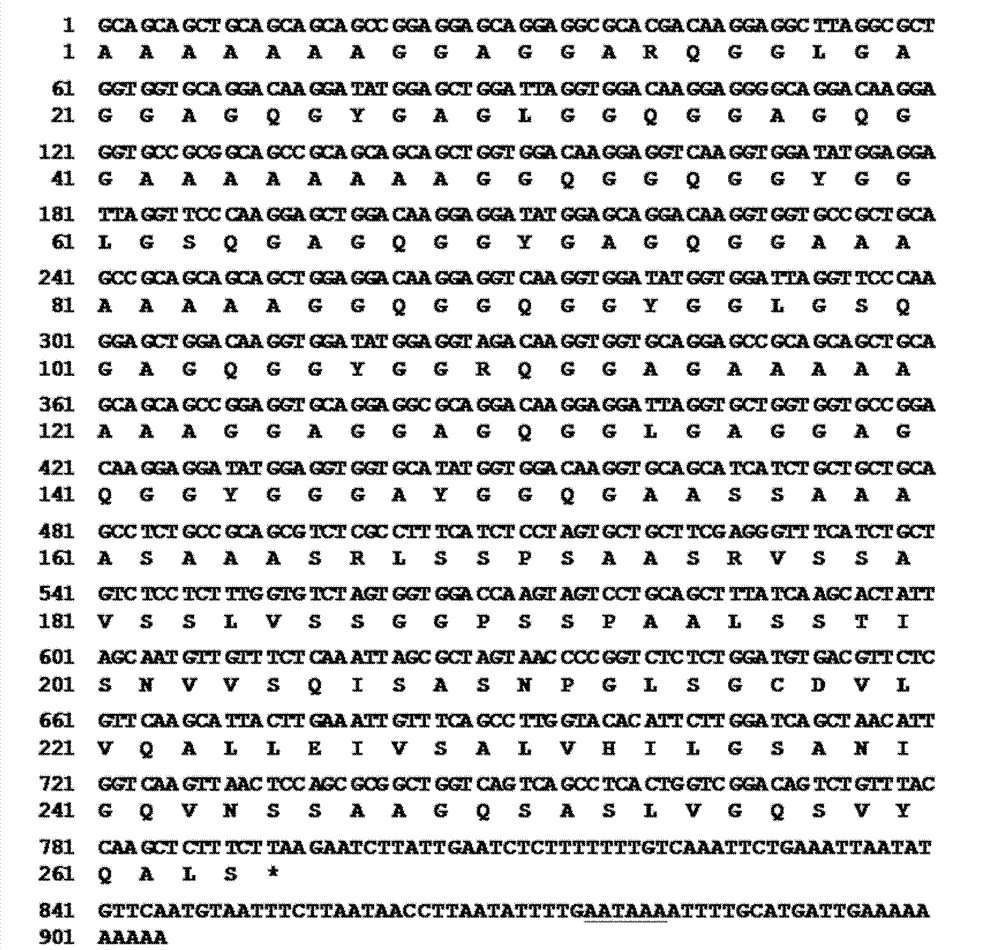Method for improving quality of rice kernel amino acid
A rice grain and amino acid technology, applied in the field of plant genetic engineering, to achieve the effect of increasing the yield of a single plant, the method is easy to implement, and the improvement cycle is short
- Summary
- Abstract
- Description
- Claims
- Application Information
AI Technical Summary
Problems solved by technology
Method used
Image
Examples
Embodiment 1
[0039] Embodiment 1: the construction of recombinant vector and the establishment of transformed Agrobacterium:
[0040] (1), according to figure 2 According to the technical route, the plasmid pUC18-Glb with the glutenin GluB-1 promoter (Glb) (according to the EMBL sequence X5433314 is PCR-amplified and cloned into the pUC18 vector (Takara company product), the method refers to Lee et al, 2001, Constitutive and seed-specific expression of a maize lysinefeedback-insensitivedihydrodipioolinate synthase gene leads to increased free lysine levels in rice seeds Molecular Breeding 8: 75-84) Digest with EcoR I and Hind III, separate and recover the target fragment, and use EcoR I and Hind III The pCAMBIA1300 (Cambia company product) after the double-digestion is ligated with T4 ligase to form an intermediate vector, and then a cDNA fragment of a spider dragline (Dragline) gene (sequence see figure 1) was cut with Kpn I and Sac I, separated and recovered the target fragment, and co...
Embodiment 2
[0044] Example 2: Agrobacterium-mediated genetic transformation:
[0045] (1), induction:
[0046] Ripe rice variety (the japonica rice variety disclosed by Dongjign Korea) seeds are shelled, then treated with 70% ethanol by volume for 1 minute, and 0.15% concentration of mercuric chloride (HgCl 2 ) Disinfect the surface of the seeds for 15 minutes; wash the seeds 4-5 times with sterilized water; place the seeds on the japonica rice induction medium; place the inoculated medium in a dark place for 4 weeks at a temperature of 25±1°C.
[0047] (2), Succession:
[0048] Select bright yellow, compact and relatively dry embryogenic calli, and place them on the japonica rice subculture medium for 2-3 weeks in the dark at a temperature of 25±1°C.
[0049] (3), pre-cultivation:
[0050] Select the compact and relatively dry embryogenic callus, put it on the japonica rice pre-medium and cultivate it in the dark for 4-5 days at a temperature of 25±1°C.
[0051] (4), Agrobacterium cu...
Embodiment 3
[0064] Extract DNA from the leaves of transgenic plants, and perform polymerase chain reaction (PCR). PCR program: 94°C pre-denaturation for 5 minutes; 33 cycles (94°C denaturation for 1 minute; 55°C annealing for 1 minute; 72°C extension for 2 minutes) , 72 DEG C to extend for 7 minutes;) Detect positive transformed plants, the single plant that can amplify the 1.2kb size band is the positive transformed single plant ( image 3 ). The RNA of the grains of the positive individual plants was extracted for Northern hybridization to detect the expression of the transferred fragments in the grains, and all the transferred fragments of the positive individual plants were expressed ( Figure 4 ). The large DNA samples of the extracted positive individual plants were digested with Sac I and Xba I (products of Takara Company) respectively, and Southern hybridization was performed to identify the fragment integration copy number of the positive transformed individual plants, and three...
PUM
 Login to View More
Login to View More Abstract
Description
Claims
Application Information
 Login to View More
Login to View More - R&D
- Intellectual Property
- Life Sciences
- Materials
- Tech Scout
- Unparalleled Data Quality
- Higher Quality Content
- 60% Fewer Hallucinations
Browse by: Latest US Patents, China's latest patents, Technical Efficacy Thesaurus, Application Domain, Technology Topic, Popular Technical Reports.
© 2025 PatSnap. All rights reserved.Legal|Privacy policy|Modern Slavery Act Transparency Statement|Sitemap|About US| Contact US: help@patsnap.com



